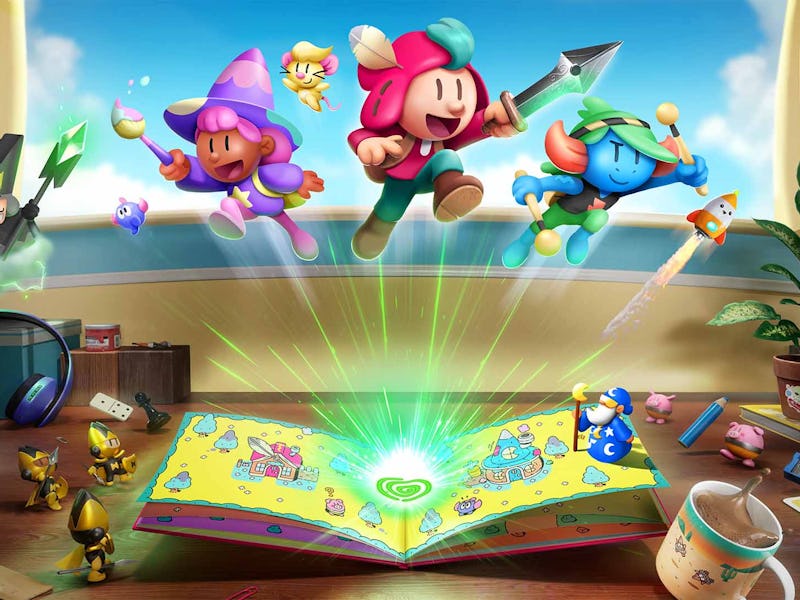The Plucky Squire Is So Charming You’ll Forget About Its Flaws
Two dimensions aren’t enough.

If you think back to your childhood, you can probably remember a story or two that inspired you — maybe even one that changed the course of your life. The Plucky Squire, which hit PlayStation Plus on its release day this week, is a game about the value of those stories, asking you to literally fight to protect one.
The Plucky Squire is the first game from developer All Possible Futures, following the journey of its titular squire. The Plucky Squire (the character) is the hero of an in-game children’s book of the same game. And specifically, the character you play as lives in a copy of the book owned by a child named Sam. At the game’s start, the Squire’s nemesis, a sorcerer named Humgrump, tosses him out of the book in order to rule its fictional realms unchallenged. Little does he know that in doing so, Humgrump is actually changing the book’s contents, and without the Squire there to keep things on track, young Sam will soon lose interest and never be inspired to become an artist himself.
The Plucky Squire is more than charming enough to make up for any quibbles with its gameplay.
So there’s a lot going on in The Plucky Squire’s premise, and the game’s mechanics are equally stuffed with ideas. You split your time in The Plucky Squire between the hand-drawn cartoon world of the book and the 3D world of the desktop it rests on. After the Humgrump sends him packing, the Squire gains the ability to use portals to hop in and out at will, often pulling objects from the real world into the book or physically flipping its pages to move to a different location within.
Once you’re in the real world, you can even enter other paper worlds, diving into sticky notes and puzzle pieces to make your way around and retrieve items you need back in the book. Inside your own story, you’ll even rearrange the words on pages to change the environment — like dragging the word “open” from one part of the page to finish the sentence “the gate was open” and make a new path for yourself.
It’s all very charming, which is ultimately one of the biggest things The Plucky Squire has going in its favor. While it’s dressed up with wonderful art and the dimension-hopping premise, much of the game is about solving simple lock-and-key puzzles, finding objects in one part of the world to unlock gates in another. Its Legend of Zelda-inspired combat is likewise pretty thin, and often feels clunky. What makes it worth playing start to finish is its wonderfully whimsical tone and the heartwarming story of artistic inspiration behind it.
The Plucky Squire’s dimension-hopping mechanics are impressive no matter how many times you see them.
While it’s set in a storybook, The Plucky Squire feels in many ways like a children’s cartoon. Its characters and plot are definitely aimed at kids more than adults, but it does give the sense of a good all-ages cartoon, one where grown-ups can enjoy jokes about Andy Warhol and homages to NES games while the kids have fun with what’s on the surface. The Plucky Squire’s story is about a book character, but it’s clearly made with a love for art of all kinds. That includes games themselves, as seen in a series of minigames that essentially mimic older titles like Punch Out!! to briefly break up the action.
If it’s not clear by now, The Plucky Squire is a very uneven game that’s nonetheless easy to recommend. Its combat and puzzles both feel a little half-baked, and at least to my jaded, definitely-not-the-target audience eyes, its broad humor, like a techno-loving wizard character, falls entirely flat. But despite that, The Plucky Squire kept me smiling the whole time I played. It’s far from a perfect game (if that even exists), but it’s got enough heart and enough style to make it a joy anyway.